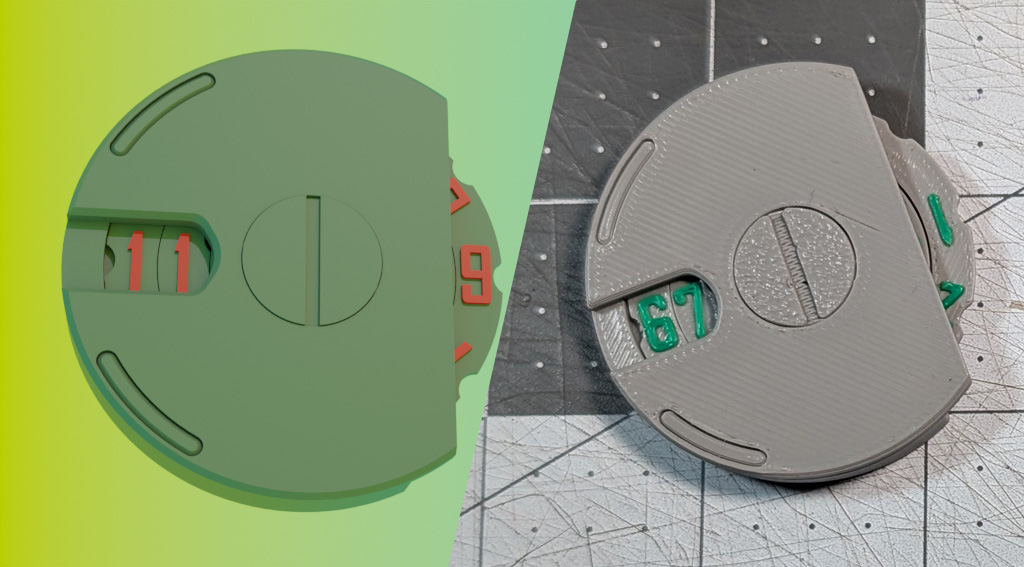
Posted August 8, 2025 by Martin
How I fixed one of my biggest tabletop pet peeves using a clever design featuring wheels within wheels
If you hang around roleplayers or boardgamers long enough, sooner or later somebody is going to whip out a hit point dial. These come in many, many, many forms, but all of them follow a very straightforward design: two dials sitting side by side with numbers along their edges, usually fastened against some type of board that connects the two dials, with a cutout that allows the user to dial in a double-digit number.
Basically, like this schematic:

This is a fine design. It’s fine. Nothing wrong with it. It does what it’s supposed to, it’s simple and intuitive, and it doesn’t get in the way.
It’s really not very elegant though, is it. It takes up about twice as much room as it needs to. Also, most of these dials do not have a way to lock numbers in place, relying mostly in friction to keep the dials in place.
I saw a need for a hit point dial that is space-efficient and compact, keeps whatever numbers you dial in from slipping, and that can even be used as a token on the board. And so, I designed my own Counter Token!
I’m not the first person to come up with a concentric design like this; if you look around, there are other designs that use a similar layout. There are also other concentric designs with springs, but as far as I’m aware, my design is flatter and more compact than most others. I haven’t literally reinvented the wheel, but I like to think I’ve iterated a good deal on it.
Let’s have a look inside.

The Counter Token is made of a grand total of nine parts: a back plate, a front plate, an inner dial, an outer dial, four springs, and a bolt. To assemble it, place the inner dial on the back plate, place the outer dial on the inner dial, place the outer springs in the outer spring slots and the inner springs in the inner slots, place the front plate on top, then use the bolt to fasten the front plate to the back plate.
This version of the Counter Token was printed on a Bambu Lab P1S.
You dial the tens by using the notches on the side, and you dial the ones with the notches on the back. Having fingernails helps, but isn’t mandatory. If you find that the dial is too difficult to turn, try removing one inner and one outer spring. The Counter Token works fine even with half the springs removed, and some people find it easier to dial that way.
To improve accessibility, I have made a left-handed and a right-handed design; they function identically, only the front and back plates are mirrored.
One of my goals was to be able to use these counters as actual tokens on a battle map, and I find they are just the right size for my maps. I could probably shrink them down further, but the tradeoff of a smaller dial is that the numbers become less legible the smaller you go.
In the next iteration of the Counter Token, I’m planning to make them actual miniature bases. That way, I’ll be able to track character health right there on the tabletop, and the players will be easily able to tell how much damage they’ve done to each enemy!
You can download the files for the Counter Token now. This includes the Blender source files in case you want to take a crack at remixing this design or making other improvements to it.
Of course, this isn’t my only wheels-within-wheels design; there’s a classic board game that famously uses wheels, and I’ve created a design for that game as well. Tune in next time to learn more!